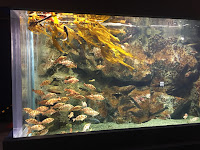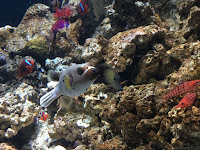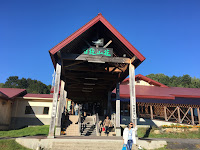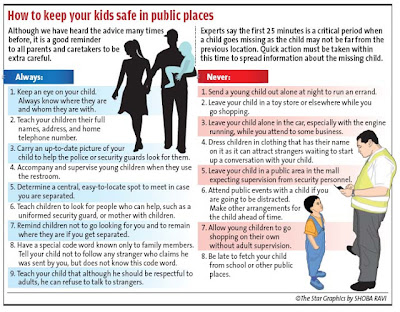JENESYS 2017 Programme - Day 3
September 21, Hotel Emion
Tokyo Bay
We as group A under theme natural disaster are headed to
Kuji, Iwate by Shinkansen. It also known as bullet train and I was really happy
to get the experience taking the train and headed to the beautiful Kuji City.
We arrived in Kuji around 12.10pm and having our lunch in restaurant and straight away moved to Kuji-city Disaster Prevention Center. We are able to met mayor of Kuji City and given the briefing on the region. Kuji suffered extensive damage basically from the earthquake and tsunami, with the tsunami reaching 27 metres in some locations, and the tsunami damage extending 4 kilometres inland. But nowadays, Kuji is known as local specialties and tourist attractions. Most popular and well known of these included Kuji amber, Ama diver women, Kokujiyaki ceramic pottery, bullfighting and the Kosode Coastline. On the briefing, we were given information on Tsunami Tendeko which was my first time heard of it and the meaning of it is go separately and run for your life to the hill and do not mind others. The community should evacuate themselves alone and this should be taught since primary school so that it can educate people easily. Pictures below captured from Kuji City area.
After that, around 4.30pm we arrived in Kuji underground
aquarium, Moguranpia. There, we are able to know that this place been hit by
the tsunami and an earthquake. On April 23rd, 2016, Kuji's underground aquarium
and science museum, "Moguranpia" are reopened in its original
location just after 5 years being completely destroyed by the Great East Japan
Earthquake and tsunami. The facility uses the inside of a tunnel in an oil
storage base, and is the only underground aquarium in Japan. We also watched
the video about the previous tragedy that happened in Kuji underground aquarium
itself and how they prevent it by building a high barrier and also they have a
steel door shield that will protect them underground in case if anything
happen.
Then, we are moved by chartered bus to the cottage and having dinner at 7.30pm and given a briefing on homestay orientation. From there, we have been separated to different foster family and for me I got Honnami family together with my Brunei friend (Wani), Indonesian friend (Sry) and Japanese friend (Eriko).
After the briefing, we straight away headed to the cottage and been
showed how to wear the yukata (light cotton kimono.for summer) and to prepare our bed which is lay out and fold up a Japanese futon. Then we went to onsen (Japanese hot spring and the bathing facilities) but before that, make sure you read the rules how to take a Japanese bath or onsen. Click here for more info about the rules in public bath there http://www.onsenjapan.net/onsenbasics.php
p/s: So basically in Japan, you are not allowed to simply capture any picture without their permissions. So we have to ask first whether they allow it or not.
Then, we are moved by chartered bus to the cottage and having dinner at 7.30pm and given a briefing on homestay orientation. From there, we have been separated to different foster family and for me I got Honnami family together with my Brunei friend (Wani), Indonesian friend (Sry) and Japanese friend (Eriko).
 |
| This is our cottage, so nice and cozy inside. |
 |
| here some guidelines on how to wear yukata |
p/s: So basically in Japan, you are not allowed to simply capture any picture without their permissions. So we have to ask first whether they allow it or not.



























































Comments
Post a Comment